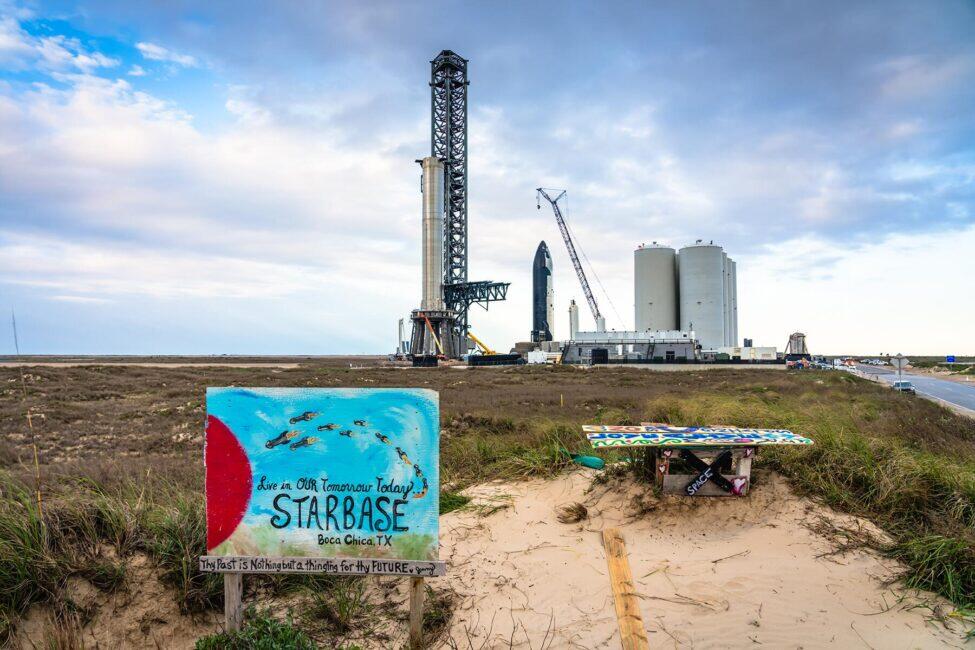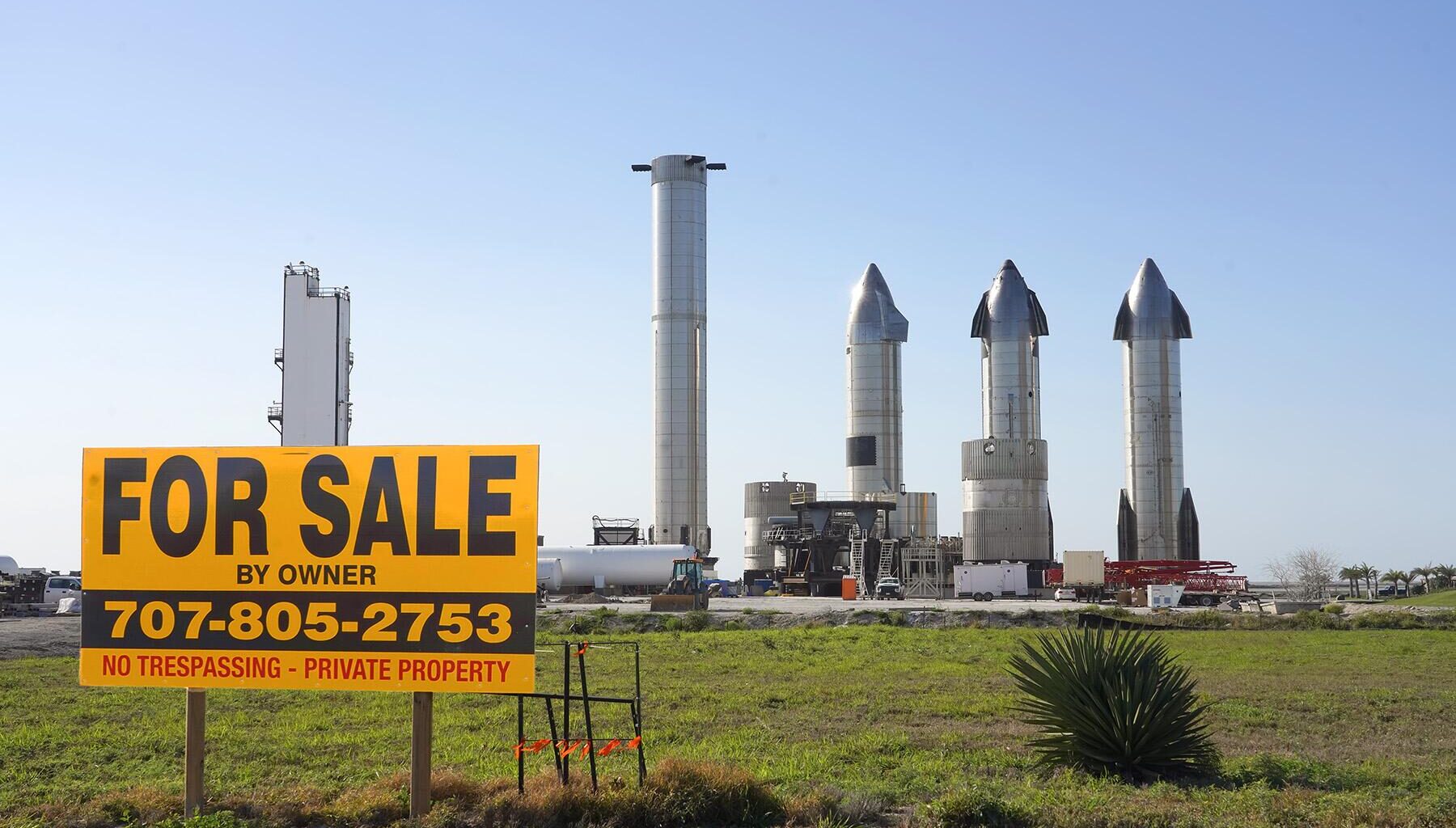As Starbase elevates the “Texas Space Coast” into a frontier for space tourism, critics warn that the gamble could irreversibly scar the Gulf shoreline and alienate the very communities it seeks to court.
On May 3, 2025, Starbase, Texas, was officially created as a brand-new Type C Texas municipality after SpaceX employees rallied for, led a petition drive, and voted 212 to 6 to incorporate a small town that occupies approximately 1.6 square miles along the Gulf of Mexico coast in Cameron County. The town was created to be a self-sufficient city that serves as SpaceX’s headquarters and a site used to build, test, and launch spacecraft as part of its Starship program.
Of course, it’s a lot easier to skirt regulations and influence politics from a literal seat of power, and forming a company town made up of employees and stakeholders makes that much simpler. The town’s citizenry recently elected a mayor and the two commissioners (all three Starbase employees or affiliates ran unopposed) required by Texas law. The duties of planning, taxation, and handling other municipal issues now fall to this governing team.
Starbase found its home in the space that was formerly Boca Chica Village, an unincorporated municipality in Cameron County. Located in the Rio Grande Valley, Cameron County forms part of the Matamoros-Brownsville and Brownsville-Harlingen-Raymondville metropolitan areas. SpaceX’s vertical launchpad is bordered by state and federal public lands, including a state park and national wildlife refuge, lands managed by the U.S. Fish and Wildlife Service.
Continue Reading Article After Our Video
Recommended Fodor’s Video
The Boca Chica area is home to tidal flats, salt prairies, vegetated sand dunes, and black mangroves, and is home to large populations of shore birds and other wildlife, some of which are threatened and endangered. The endangered Kemp’s Ridley sea turtle nests on Boca Chica Beach, which lies only a quarter of a mile from the vertical launch site.
 Richard-Schneider-CC-BY-NC-2.0
Richard-Schneider-CC-BY-NC-2.0
The environmental group, Friends of the Wildlife Corridor, has come out against SpaceX, noting on their website that “increased activities such as rocket testing, launches, explosions, fires, and water contamination will have increased negative impacts on wildlife and habitat. These effects need to be studied, avoided, minimized, and mitigated.” Their protests have been joined by local residents including representatives from Latino, Chicano, and Indigenous groups, particularly the Carrizo/Comecrudo Tribe of Texas who consider Boca Chica Beach sacred land.
Friends of the Wildlife Corridor’s website lists environmental damages that have already been caused, including two fires that burned a combined 161 acres and damaged sensitive dunes. Launches also cause explosions across sensitive habitats in a three-mile radius, which is removed by heavy equipment that is “scarring the land.” Environmental groups have sued SpaceX and the FAA, and SpaceX has been fined for polluting Texas waters.
Blocking Boca Chica Beach
In addition to environmental problems, the new town is stirring up political and constitutional issues surrounding beach access. While 1.6 square miles and 500 people (the town’s population is mostly made up of employees and their families) may not seem like a huge political stronghold, in its fledgling days as a town Starbase and SpaceX have already managed to ruffle a lot of local feathers through legislation. Texas House Bill 5246, which revises the duties and power of the Texas Space Commission and the Texas Aerospace Research and Space Economy Consortium, included a last-minute addition that transfers the power to control temporary beach and highway closures in the area from Cameron County to Starbase. Though locals protested the move, HB5246 passed on June 2.
Originally, the FAA only allowed SpaceX up to 180 hours per year to close the roads. This eventually increased to 300 hours per year, and SpaceX gobbled those allotments up quickly, just as they did their allotted number of launches (FAA originally allowed five launches per year, eventually capitulating to 25).
Now, when it’s time for a launch test, Starbase has the power to shut down Highway 4, the only route in and out of the area. This effectively cuts off beach access for residents, land managers, scientists, and visitors, when, according to the Texas General Land Office, “In Texas, public access to Gulf Coast beaches is not just the law, it is a constitutional right.”
Texas Space Tourism
While locals and environmental groups may not be excited about the new town and the test site, the local tourism industry looks to these new developments as an opportunity. Visit South Padre, the tourism agency tasked with promoting the popular coastal destination, has enthusiastically embraced space tourism. Look at what NASA’s Johnson Space Center did for Houston, after all.
Page 25 of the South Padre Visitors Guide offers up a full page to promote the new “Texas Space Coast,” showcasing South Padre Island, which sits just across South Bay from the Starbase launchpad, as a “front row seat to see rocket history being made.” Even if there’s not a scheduled launch test event, visitors can drive down Highway 4 to see the rocket up close.
But so far, even as South Padre Island continues to experience remarkable year-over-year growth since 2021, space tourism may not be the blessing they thought it would be.
A recent post on Visit South Padre Island’s Instagram account, promoting launch test number 9 of Starship around Memorial Day weekend, was met with a less-than-enthusiastic response from the public. Some used the post to voice concerns about the environmental impact of the launches to the beach, wildlife, and the Gulf of Mexico, and to speculate about the future of tourism in the area.
“There won’t be a tourism industry left in SPI once space x (sic) completely demolishes the environment,” commented @duh_realslimjadey.
A follow-up post recapping the launch drew even more ire as commenters lamented the loss of their beautiful coastline to failed rocket launches.
“Polluting the community in every sense, and y’all applaud…? Wake up and smell the demise of one of the last parcels of the beautiful Texas Gulf of Mexico, @atxchiller commented.
“Space X is destroying our fragile ecosystem,” said @elmaryella, while @emilykinsolving commented “Breaks my heart to see what once was a pristine coastline turn into this.”
While it’s no shock that the tourism industry is at odds with the concerns of locals, this environmentally destructive corporate takeover of the area may just be the thing that eventually drives tourists to other Gulf Coast locales, unseating South Padre Island as the top coastal destination in the state.
